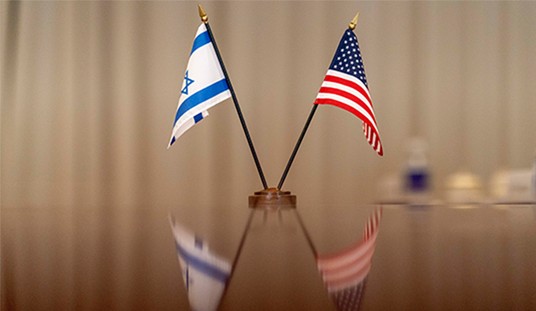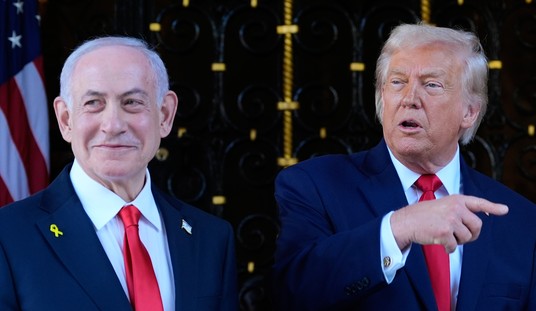Imam Feisal Rauf, “founder and visionary” of the Cordoba Initiative, apparently sees the construction of a triumphal mosque within the 9/11 World Trade Center attack’s zone of destruction as a fulfillment of his vision for Islam in America. As Rauf stated in his 2004 What’s Right with Islam, a work limited to treacly Islamic propaganda:
For many centuries, Islam inspired a civilization that was particularly tolerant and pluralistic. … Great philosophers such as Maimonides were free to create their historic works within the pluralistic culture of Islam.
Rauf envisions this invented past as a model for the future “Sharia-compliant” America he desires.
Self-proclaimed “contrarian” Christopher Hitchens asserted his distaste for those in charge of the Cordoba Initiative, especially Rauf, characterizing the imam’s utterances about the 9/11 atrocities as “shady and creepy.” Yet even Hitchens upheld the Andalusian myth of Cordoba, calling it:
The site of an astonishing cultural synthesis, best associated with the names of Averroes ibn-Rushd and Moses Maimonides …
Hitchens gleaned this, apparently, from his reading of the pseudo-academic apologetics of María Rosa Menocal’s The Ornament of the World, which he insisted was “the finest recent book on the subject.”
Pace Hitchens’ uninformed praise, Menocal’s superficial hagiography ignores the mid-20th century studies of Evariste Levi-Provencal and Charles Emmanuel Dufourcq, and more recently Jane Gerber’s focused 1994 analysis debunking the “Golden Age” myth in Muslim Spain as:
[The] aristocratic bearing of a select class of courtiers and poets, [which consisted only of] garishly packaged … gilded moments.
Whitney Bodman, associate professor of comparative religion at Austin Presbyterian Theological Seminary, has provided the most egregious misrepresentation of “Cordoban ecumenism.” He invoked it specifically to defend Imam Rauf’s GZM project and to condemn its opponents –who now represent 70% of both the U.S. and New York populations — for failing to understand “ … the difference between the Muslims of al-Qaeda and the Muslims of Cordoba.” Professor Bodman’s warped narrative was punctuated by the utterly ahistorical claim that the purported idyllic interfaith relations and glorious cultural symbiosis of Cordoba were abruptly terminated by the Spanish Catholic Inquisition:
The name “Cordoba House” is significant. It is named after the famed medieval Spanish city of Cordoba where philosophers, mystics, artisans and poets — Muslim, Christian, and Jewish — lived and shared together. … Its libraries were vast, and the translations of Arabic works into Latin changed Europe and Christianity forever. Among the resident luminaries were Maimonides, a noted Jewish intellectual, the poet Ibn Hazm, and Averroes, the Muslim philosopher and mystic. … With the coming of the Inquisition and Christian exclusivism, the brilliance of Cordoba faded, but its significance endures as a vibrant, inter-religious community.
Reinhart Dozy (1820-1883), the great Orientalist scholar and Islamophile, wrote a four volume magnum opus (published in 1861 and translated into English by Francis Griffin Stokes in 1913) titled Histoire des Musselmans d’Espagne (A History of the Muslims in Spain). Here is Dozy’s historical account of the mid-8th century “conversion” of a Cordoban cathedral to a mosque:
All the churches in that city [Cordoba] had been destroyed except the cathedral, dedicated to Saint Vincent, but the possession of this fane [church or temple] had been guaranteed by treaty. For several years the treaty was observed; but when the population of Cordova was increased by the arrival of Syrian Arabs [i.e., Muslims], the mosques did not provide sufficient accommodation for the newcomers, and the Syrians considered it would be well for them to adopt the plan which had been carried out at Damascus, Emesa [Homs], and other towns in their own country, of appropriating half of the cathedral and using it as a mosque. The [Muslim] Government having approved of the scheme, the Christians were compelled to hand over half of the edifice. This was clearly an act of spoliation, as well as an infraction of the treaty. Some years later, Abd-er Rahman I requested the Christians to sell him the other half. This they firmly refused to do, pointing out that if they did so they would not possess a single place of worship. Abd-er Rahman, however, insisted, and a bargain was struck by which the Christians ceded their cathedral.
Indeed by the end of the eighth century, the brutal Muslim jihad conquest of North Africa and of Andalusia had imposed rigorous Maliki jurisprudence (one of the four main Sunni schools of Islamic law) as the predominant school of Muslim law. Thus, as Evariste Lévi-Provençal (1894-1956) — the greatest modern scholar of Muslim Spain, whose Histoire de l’Espagne Musulmane remains a defining work — observed 75 years ago:
The Muslim Andalusian state thus appears from its earliest origins as the defender and champion of a jealous orthodoxy, more and more ossified in a blind respect for a rigid doctrine, suspecting and condemning in advance the least effort of rational speculation.
For example, the contemporary scholar J.M. Safran discusses an early codification of the rules of the marketplace (where Muslims and non-Muslims would be most likely to interact) written by al-Kinani (d. 901), a student of the Cordovan jurist Ibn Habib (d. 853) — “known as the scholar of Spain par excellence,” who was also one of the most ardent proponents of Maliki doctrine in Muslim Spain:
[The] problem arises of “the Jew or Christian who is discovered trying to blend with the Muslims by not wearing the riqā [cloth patch, which might be required to have an emblem of an ape for a Jew, or a pig for a Christian] or zunnār [belt].” Kinani’s insistence that Jews and Christians wear the distinguishing piece of cloth or belt required of them is an instance of a legally defined sartorial differentiation being reconfirmed. … His insistence may have had as much to do with concerns for ritual purity and food prohibitions as for the visible representation of social and political hierarchy, and it reinforced limits of intercommunal relations.
Notwithstanding Professor Bodman’s allusion, Ibn Hazm (d. 1064) was hardly just a Muslim “poet,” nor was he a paragon of ecumenism.
He was a viciously anti-Semitic Muslim theologian whose inflammatory writings helped incite the massive pogrom against the Jews of Granada which killed 4000, destroying the entire community in 1066. And Averroes — despite his “philosophical studies” — was also a traditionally bigoted Maliki jurist who rendered strong anti-infidel Sharia rulings and endorsed classical jihadism for the very same Almohads who eventually turned upon him.
Moreover, what Maimonides escaped in the 12th century — disguised as a Muslim — was nothing less than a full-blown Muslim Inquisition under the Muslim Almohads.
The jihad depredations of the Almohads (1130-1232) wreaked enormous destruction on both the Jewish and Christian populations in Spain and North Africa. This devastation — massacre, captivity, and forced conversion — was described by the Jewish chronicler Abraham Ibn Daud and the poet Abraham Ibn Ezra. Suspicious of the sincerity of the Jewish converts to Islam, Muslim “inquisitors” (antedating their Christian Spanish counterparts by three centuries) removed the children from such families, placing them in the care of Muslim educators.
Ibn Aqnin (1150-1220), a renowned philosopher and commentator born in Barcelona, also fled the Almohad persecutions with his family. He escaped, like Maimonides, to Fez. Living there as a crypto-Jew, he met Maimonides, and recorded his own poignant writings about the sufferings of the Jews under Almohad rule.
Ibn Aqnin wrote during the reign of Abu Yusuf al-Mansur (r. 1184-1199), four decades after the onset of the Almohad persecutions in 1140. Thus the Jews forcibly converted to Islam were already third-generation Muslims. Despite this, al-Mansur continued to impose restrictions upon them, which Ibn Aqnin chronicles.
Expanding upon Jane Gerber’s thesis about the “garish” myth of a “Golden Age,” the late Richard Fletcher (in his Moorish Spain) offered a fair assessment of interfaith relationships in Muslim Spain and his view of additional contemporary currents responsible for obfuscating that history:
The witness of those who lived through the horrors of the Berber conquest, of the Andalusian fitnah in the early eleventh century, of the Almoravid invasion — to mention only a few disruptive episodes — must give it [i.e., the roseate view of Muslim Spain] the lie.
The simple and verifiable historical truth is that Moorish Spain was more often a land of turmoil than it was of tranquility. … Tolerance? Ask the Jews of Granada who were massacred in 1066, or the Christians who were deported by the Almoravids to Morocco in 1126 (like the Moriscos five centuries later). … In the second half of the twentieth century a new agent of obfuscation makes its appearance: the guilt of the liberal conscience, which sees the evils of colonialism — assumed rather than demonstrated — foreshadowed in the Christian conquest of al-Andalus and the persecution of the Moriscos (but not, oddly, in the Moorish conquest and colonization). Stir the mix well together and issue it free to credulous academics and media persons throughout the western world. Then pour it generously over the truth … in the cultural conditions that prevail in the west today the past has to be marketed, and to be successfully marketed it has to be attractively packaged. Medieval Spain in a state of nature lacks wide appeal. Self-indulgent fantasies of glamour … do wonders for sharpening up its image. But Moorish Spain was not a tolerant and enlightened society even in its most cultivated epoch.
But far more alarming than the corrosive apologetics about medieval Muslim Spain are the expressed ideas and tangible behaviors of “moderate” Muslims actively promoting modern Spain’s re-Islamization.
For example, events surrounding the completion of the new Granada mosque were marked by celebratory announcements on July 10, 2003, of a “return of Islam to Spain.” At a conference entitled “Islam in Europe” that accompanied the opening of the mosque, disconcerting statements were made by European Muslim leaders. Specifically, the keynote speaker at this conference, Umar Ibrahim Vadillo, a Spanish Muslim leader, encouraged Muslims to cause an economic collapse of Western economies (by ceasing to use Western currencies and switching to gold dinars). The German Muslim leader Abu Bakr Rieger told Muslim attendees to avoid adapting their Islamic religious practices to accommodate European (i.e., Western Enlightenment?) values.
Writing in the immediate aftermath of the Madrid 2004 train bombings, Islamic scholar Mordechai Nisan discussed the contention by the “moderate” founder of the Institute of Islamic Education, M. Amir Ali, that medieval Spain had actually been “liberated” by Muslim forces, who “deposed its tyrants.” Nisan extrapolated this ahistorical narrative line, and pondered:
Reflecting on March 11 [2004] as Muslim terrorism killed 200 and wounded 1,400 in Madrid, one wonders whether one day this event will also not be commemorated as a liberating moment.
We must also ponder whether Imam Feisal Rauf, whose 2004 What’s Right with Islam was published and marketed in Muslim Malaysia as A Call to Prayer from the World Trade Center Rubble: Islamic Da’wah [Proselytization] From the Heart of America Post-9/11, considers the cataclysmic acts of jihad terrorism on 9/11 a similarly “liberating” occasion.









Join the conversation as a VIP Member